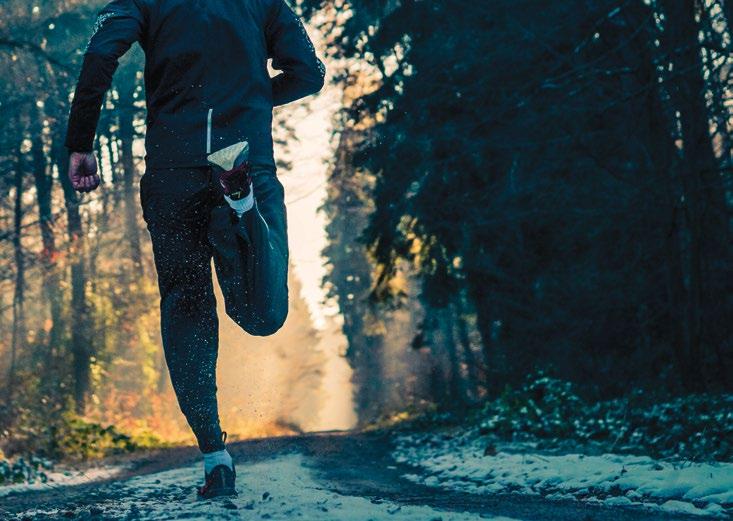
2 minute read
Cold challenges
Exercising Safely
Story by Phoenix Content Services
Advertisement
Many of us pack on the pounds over the winter because of a more sedentary season due to poor weather conditions. In fact, the average winter weight gain ranges from five to 10 pounds, according to a recent report by AccuWeather.
We avoid going outside as frequently to avoid the colder temperatures, rain, snow and ice. While this is understandable, many exercise experts say that walking, running or working out in cold weather actually offers many health benefits.
Get More Vitamins
While many avoid the cold, outdoor winter workouts are a great way to absorb small doses of sunlight. The sunlight can help to improve mood and help with vitamin D intake, according to the American Heart Association.
Stave Off Sickness
Winter exercise can also boost immunity during cold and flu season. A few minutes a day can help prevent simple bacterial and viral infections, according to the Centers for Disease Control and Prevention.
A Better Exercise
Why work out in the winter? For one thing, there is no heat and humidity to deal with in colder weather. Winter’s chill might even make you feel awake and invigorated, according to the AHA. Regardless of exercise, studies have shown that being outside in cold weather can transform stubborn fat from our bellies and thighs into calorie-burning fat.
in the Cold

© adobe stock

How to Exercise Safely
The Mayo Clinic provides the following tips for staying safe during your cold-weather exercise.
Dress in layers. Dress in layers that you can remove as soon as you start to sweat and then put back on as needed. First, put on a thin layer of synthetic material, such as polypropylene, which draws sweat away from your body. Avoid cotton, which stays wet next to your skin. Next, add a layer of fleece or wool for insulation. Top this with a waterproof, breathable outer layer.
Drink plenty of fluids. Hydration is just as important during cold weather as it is in the heat. Drink water or sports drinks before, during and after your workout, even if you don’t feel thirsty.
Wear gloves. Wear a thin pair of glove liners made of a wicking material (such as polypropylene) under a pair of heavier gloves or mittens lined with wool or fleece.








